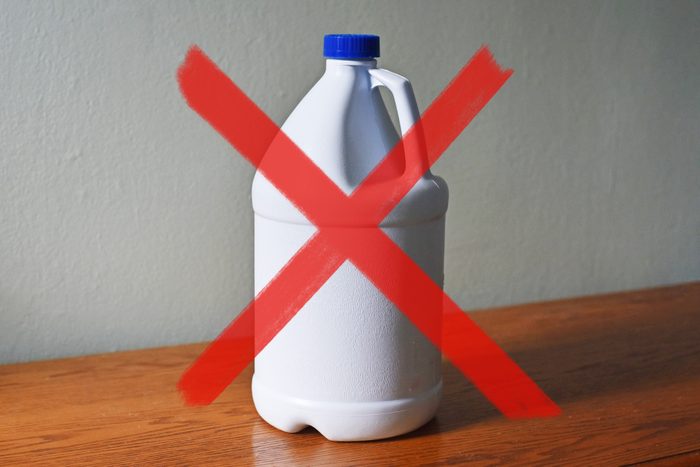
Beware of bleach in these situations
Bleach is powerful stuff—and that can be a good thing and a bad thing. While there are plenty of smart ways to use bleach, it can also seriously damage objects and surfaces. “Full-strength sodium hypochlorite can damage even surfaces and items on which it is generally safe to use,” cautions Janice Stewart, owner of Castle Keepers House Cleaners in Charleston, South Carolina. “It should always be diluted.” Make sure you’re not overusing bleach, and definitely be sure you’re not using it on these things that it could seriously harm. And these are just the things you shouldn’t clean with bleach—for more bleach safety tips, here are the products you should never mix with bleach.
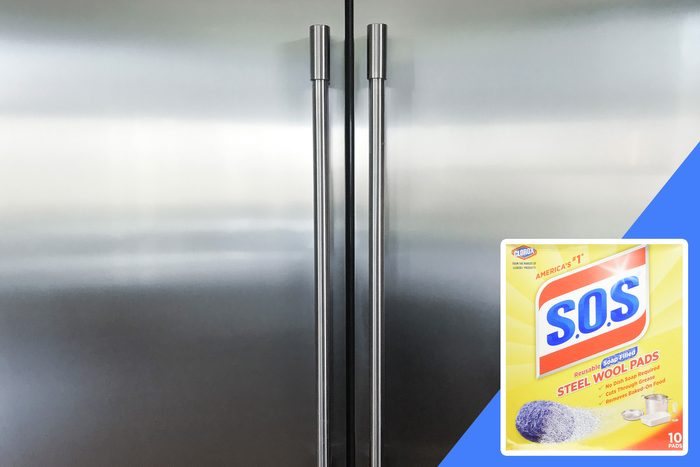
Metal and stainless steel
Yes, this is pretty broad. But using bleach on metal surfaces can cause them to rust, so you should keep bleach away from metal. “As bleach contains ingredients that serve as oxidants, materials such as stainless steel can become corroded when exposed to bleach,” says Ana Andres, co-founder of TidyChoice. “It is better to avoid using bleach on metal surfaces such as stainless steel appliances, cutlery, and pots and pans.”
What to use instead: Andres suggests just using warm water and dishwashing liquid to clean metal cookware. For grime that’s really stuck on, you can try loosening it by soaking it in boiling water, if possible. “A wire or plastic scrubber may also be useful,” she adds. As for stainless steel appliances, Natalie Barrett, cleaning expert and quality supervisor at Nifty Cleaning Services, uses white vinegar combined with olive oil to remove grease stains. Speaking of wire scrubbers, find out the things you should never clean with SOS pads.
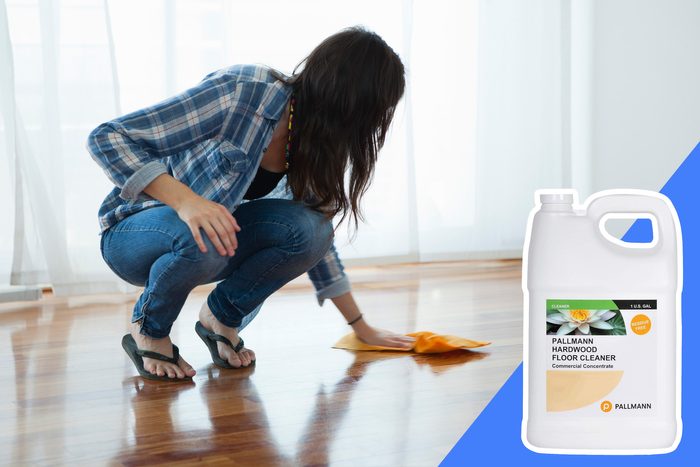
Wood surfaces
Think you can just run a swipe of bleach across your wooden countertops or floors? Think again. “Wood is porous, and bleach will seep into the fibers,” explains David Cusick, Chief Strategy Officer at House Method. “You won’t be able to remove the bleach for safe sanitation, and it will cause discoloration and weaken the wood.” And, yes, this goes for hardwood floors, too: The bleach will simply seep right into it rather than properly cleaning it.
What to use instead: Water and dish detergent should suffice for cleaning most wooden surfaces, or any water-based cleaner! Plus, find out the 8 best ways to clean hardwood floors.
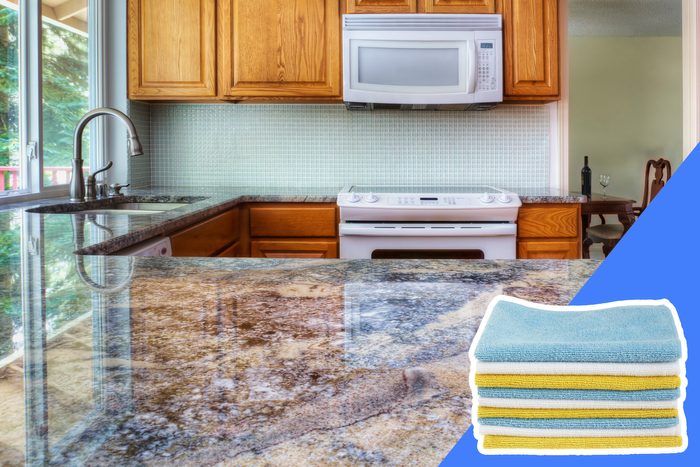
Stone countertops
While porous wooden countertops are one thing, you should avoid using bleach on your stone countertops for a whole different reason. While bleach will soak right through wood, it can do serious damage to granite countertops. “Absorptive surfaces such as your stone, granite, and marble countertops should never be cleaned with bleach,” warns Andrew Barker, founder of HomeownerCosts. “They will become dull, discolored, pitted, and etched.”
What to use instead: Surprise—it’s water and dish soap again! “Instead of bleach, you can use cotton or microfiber cloth in cleaning your stone countertops,” Barker says. “Thoroughly soak your cloth in a mixture of water and liquid dish soap.” If you’re not cleaning with microfiber cloths, here’s why you should be.
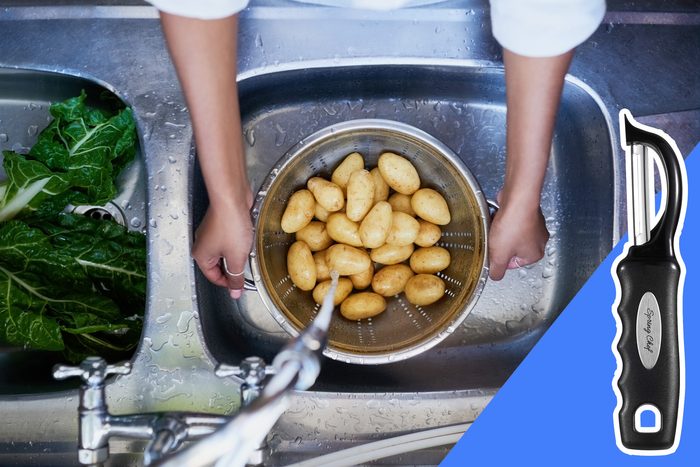
Anything edible
This might seem obvious, sure. But in this hyper-clean era of virus panic, assuming “the cleaner the better” might lead you to consider cleaning your food with bleach. But you shouldn’t do this! “Using bleach to clean fruits and vegetables is an absolute no-no,” Barrett cautions. “Bleach is made up of sodium hypochlorite, surfactants, and chlorine. These substances are extremely dangerous for humans when inside the body.” And as well as you may think you’re washing off all of the bleach, there’s no reason to risk it as it’s very unlikely that it’ll be completely gone.
What to use instead: Barrett’s advice is to “wash the skins of your vegetables and fruits with fresh water thoroughly. Where possible, remove the skins for maximum safety.” While water is the safest choice for your food, here are 14 things you should not clean with water.
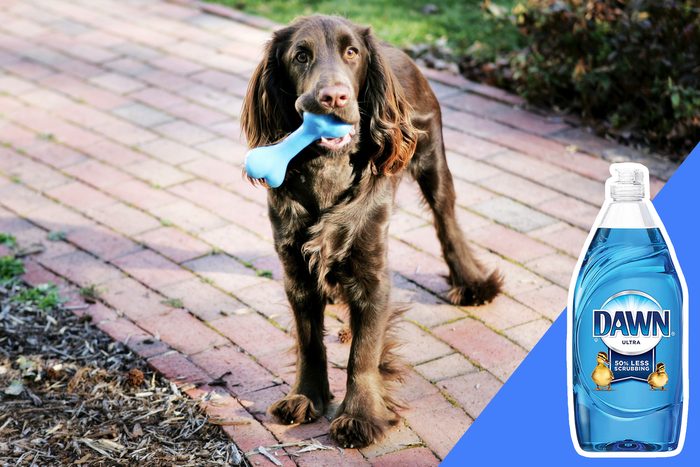
Pet products
You don’t want to risk this potentially harmful cleaner crossing paths with your furry friend, so avoid using bleach to clean anything they come into contact with. “Bleach should not be used to clean cat items because of toxicity issues to the feline’s kidneys and liver,” says cat blogger Jenny Dean. She says that the only exception could be ” if you receive a litter box secondhand or something along those lines, you can clean it with a SMALL amount of bleach mixed with water (like a one-to-ten ratio).” But she says that after that, you should clean it again to make sure that there’s no lingering bleach.
But as a general rule, don’t clean any pet products, be they food bowls, bedding, toys, and the like, with bleach. You should also be careful about using bleach on any floors that your pets regularly walk across. If your dog or cat gets bleach on her paws, and then starts to lick her paws…bad news.
What to use instead: Just use water and a mild soap like dish detergent to wipe down your pets’ accessories. Alternatively, you could use a DIY cleaning solution of one part vinegar to three parts water. Find out the things you shouldn’t be cleaning with dish soap.
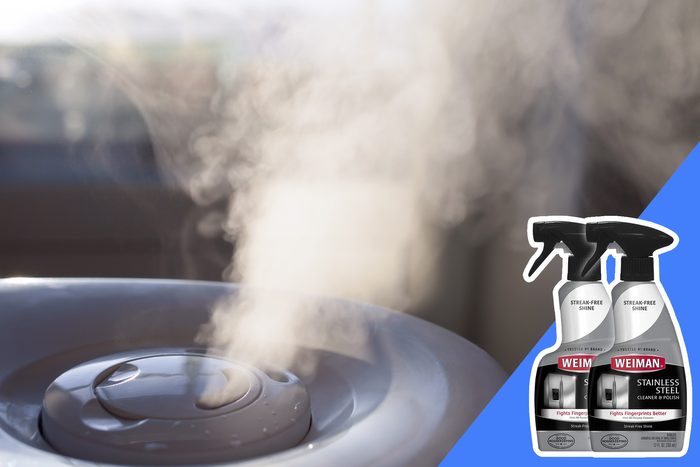
Humidifier parts
The main reason you shouldn’t take bleach to your humidifier is, unsurprisingly, because parts of it are made of metal. But Albert Lee, founder of Home Living Lab, says that “bleach can do a good job disinfecting the humidifier water tank.” This might lead you to just use it for the whole humidifier, even the metal parts that it could potentially damage. But, just like any other stainless steel, it could corrode them and cause lasting damage.
What to use instead: “To clean these humidifier parts made of stainless steel, a simple mixture of water and detergent is more than adequate,” Lee says. “If you really must use bleach, be sure to get a bleach-based cleanser that is designed for metal and [that the metal] has been passivated.” Here are 12 ways you’re shortening the life of your home appliances.
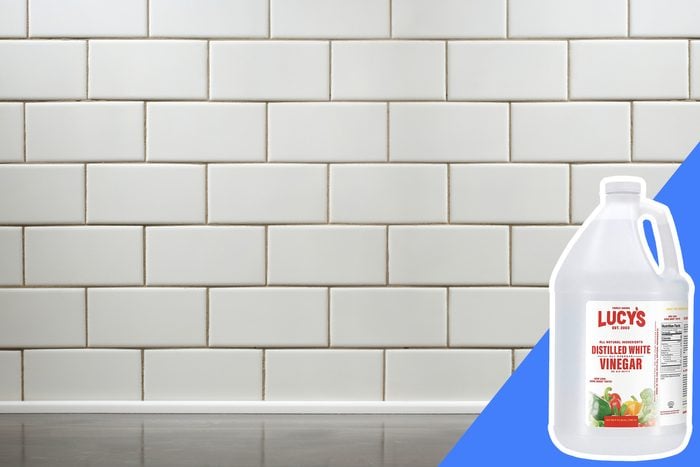
Grout lines
Yes, eliminating mold is one of the cleaning tasks that bleach is best suited for. Unfortunately, though, the same can’t be said for grout lines. Specifically, “it can discolor grout lines,” Cusick says.
What to use instead: Cusick has a simple method: “Use warm water and vinegar, spray the mix on the grout lines, leave for a few minutes, then scrub away and rinse.” He also suggests trying a paste made of baking soda and hydrogen peroxide: “Apply it on the grout lines, scrub away, and rinse.” Find out the things you shouldn’t clean with baking soda.
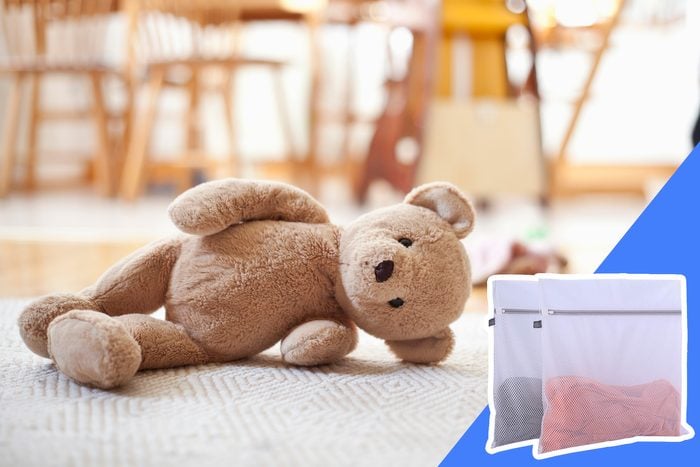
Stuffed animals and toys
Yes, kids’ toys can get pretty nasty—but you still shouldn’t break out the bleach. “Even if the stuffed animal is a light color, many just weren’t made to withstand it,” says photographer Michael Freeby. Keep bleach away from kids’ bath toys, like squirty toys, too, says Andres: “It’s difficult to rinse thoroughly out of the inside of the toys and could then pose a danger to your child.”
What to use instead: For squirty toys, there’s a simple solution—and a way to tell if you just need to toss them. “If squirty toys don’t come clean with a vinegar and soap solution, then they need discarding,” Andres says. Freeby has a specific method for cleaning stuffed animals: “My best results have been with shoe cleaners (the kind that would be used for canvas type shoes), followed up immediately with an organic hair conditioner to keep the fur/plush soft.” Of course, he’s trying to get them spick-and-span to be photographed, so your stuffed animals might not merit that level of cleanliness. You can try washing them in the machine on a delicate cycle, placing them in a garment laundry bag or a pillowcase to protect them. Make sure you’re aware that bleach does expire.
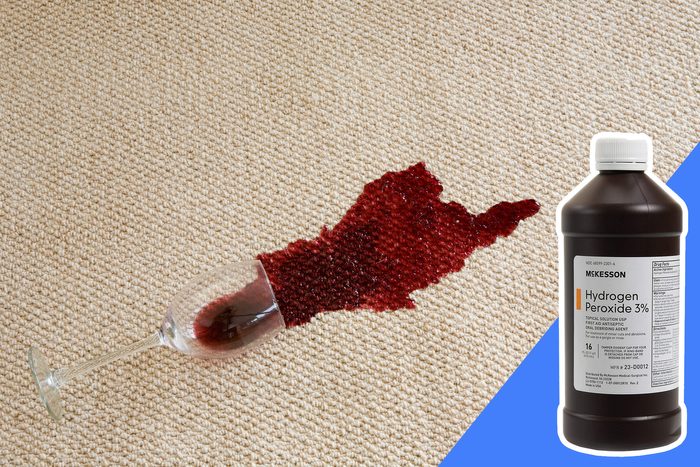
Red wine stains
It can be tempting to throw everything you’ve got at a red wine stain, especially if the garment is light in color. But even if it’s white, you shouldn’t bleach it to remove red wine, says Diana Rodriguez-Zaba, President of ServiceMaster Restoration by Zaba. “Don’t ever use bleach to clean red or pink wine stains from garments—this will stain the garment yellow,” she warns.
What to use instead: Hydrogen peroxide! “Dab a bit of hydrogen peroxide over the stain, let it soak for five to ten minutes, apply a bit of dishwashing soap over the stain, and throw it in the washer,” says Rodriguez-Zaba. “Wash on the recommended cycle.” Here are 10 laundry mistakes to make sure you avoid.
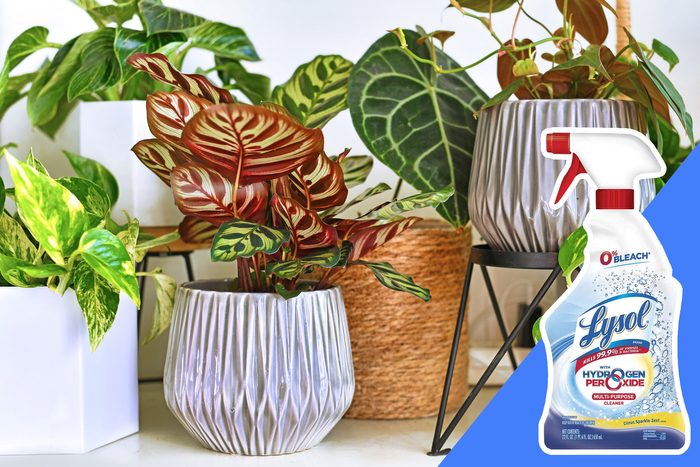
Anything near your plants
If you’re a dedicated plant parent, make sure you’re not potentially harming your plants by exposing them to lots of bleach, especially undiluted. “Undiluted bleach can quickly kill your house and outdoor plants,” warns Stephen Jones, Chief Marketing Officer at 420 DC. “If you’re spraying off deck chairs or cleaning around indoor pots, make sure you’re diluting your bleach and move your plants to another room during the process.”
What to use instead: Like Jones says, you can move your plants when you’re using bleach, and make sure the bleach is diluted. Or, “better yet,” he suggests, “use a bleach-free cleaner in these areas to be safe.” Next, find out 10 different ways you’re not using bleach, but should.
Sources:
- Janice Stewart, owner of Castle Keepers House Cleaners
- Ana Andres, co-founder of TidyChoice
- Natalie Barrett, cleaning expert and quality supervisor at Nifty Cleaning Services
- David Cusick, Chief Strategy Officer at House Method
- Andrew Barker, founder of HomeownerCosts
- Jenny Dean, cat blogger
- Albert Lee, founder of Home Living Lab
- Michael Freeby, photographer
- Diana Rodriguez-Zaba, President of ServiceMaster Restoration by Zaba
- Stephen Jones, Chief Marketing Officer at 420 DC
